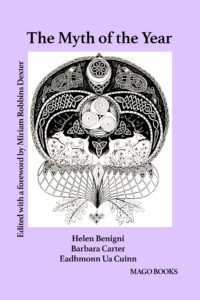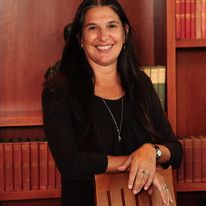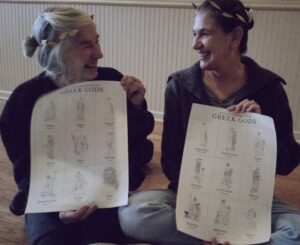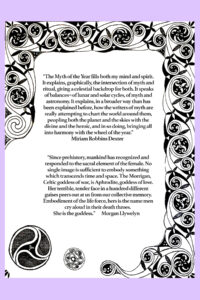
The Myth of the Year: Returning to the Origin of the Druid Calendar
Authors Helen Benigni, Barbara Carter, and Eadhmonn Ua Cuinn
Publication Date March 27, 2023
ISBN 9798358173781
Total Page Numbers 163
Sizes 6×9
Order (Income from sales of this book is donated to The Mago Work, which includes the S/HE journal, Return to Mago E-Magazine, Mago Books, and Mago Academy)
Book Launching Event on Facebook available here
Description The Myth of the Year reveals the astronomy underlying Celtic and Greek mythology using the calendar of the Druids discovered in Coligny, France and the Sacred Calendar of Eleusis of ancient Greece. The myths of the ancients follow the seasons through the constellations illuminating the path of knowledge our ancestors lived throughout their year. To fully explain the meaning of these seasonal myths, the origin of the goddesses and the gods are traced to their Neolithic roots using Marija Gimbutas’ archetypes of the Neolithic Pantheon. Indo-European adaptations made to some of the major deities are also discussed providing a profile of the evolution of the ancient goddesses and gods from Neolithic times to their present representations in the night sky. Besides linking astronomy to mythology, The Myth of the Year presents an effective and carefully researched path of ancient knowledge viable to the public today as a source of the patterns of the sky, the earth, the moon, and the sun meticulously plotted through eons of ancient knowledge. Travel through the year and learn to keep time as the ancients did by the night sky. Explore the rhythms of the earth through the goddesses and gods of the human imagination on its voyage through time.
Table of Contents
Acknowledgements
Introduction: The Discovery of The Sequani Calendar
Chapter One: The Sequani Calendar and the Sacred Calendar of Eleusis
Chapter Two: Light Through the Hero’s Eyes
Chapter Three: The Great Goddess of the Winter Sky
Chapter Four: The Celestial Spring
Chapter Five: Time-Keeper, Earth-Keeper, Star-Keeper
Appendixes
Index with Definitions from Astronomy, Mythology, and Archeology
About Authors

Helen Benigni (Ph.D. Indiana University of Pennsylvania) is a published author and a Full Professor in English at Davis and Elkins College in Elkins, West Virginia. For several decades, Helen has been teaching classes in Comparative Mythology with an emphasis on Goddess studies. Her books, The Myth of the Year (University Press of America, 2003), The Goddess and the Bull (University Press of America, 2007), and The Mythology of Venus (University Press of America, 2013) incorporate the research findings of archeoastronomers to determine the myths associated with the cycles found on the ancient calendars of the Greeks and the Celts. Identifying the goddesses of the matri-local cultures of the ancients with the seasons represented by the lunar, solar and stellar bodies has been a major endeavor in the study of archetypes, with an emphasis on the feminine archetypes of the celestial realms. Helen’s research with the Hellenic Studies Center in Washington D.C., her many trips to ancient sites, and her collaborative efforts with scholars in mythology, astronomy, archeology, and art have led to her discovery of the presence of the Goddess in the night sky and the continued renewal of the Goddess in contemporary times.

Barbara Carter has translated the ancient calendar which was discovered in Coligny, France. Without her insights into the astronomy of the ancients, The Myth of the Year, The Goddess and the Bull and The Mythology of Venus could not have been written. Carter’s charts of the cycles of the sun, the moon, and constellations are an essential part of this study. Her genius lies in translating the notations of the ancients which were engraved in stones of the ancient monuments in France, Britain, and Ireland and on the bronze tablet of the Coligny Calendar. Carter comes from a background as a sociologist studying at the University of Colorado and her outlook is one of ethnography combined with the expertise of astronomy; she has said she interprets the calendar by studying both the night sky and going to the culture to get the story of the people and their tribal rituals and beliefs. Her calculations and insights, and her eternal counting and re-counting of the movements of the celestial bodies visible to the ancients has endowed this study with her talents as Time-Keeper.

Eadhmonn Ua Cuinn was a Dealbhoir-Sculptoir of La Tene Celtic Art and Stonecarving. Eadhmonn taught Celtic Stonecarving at the Augusta Heritage Center in Elkins, West Virginia for over two decades until his death in recent years. Eadhmonn’s passion for studying the Celts began when he joined the Celtic League in New York City studying under Youenn Gwerneg and befriending Morgan Llywelyn. Eadhmonn’s scholarly genius in Celtic Studies was the guiding force of inspiration for the translation of the Coligny Calendar which he introduced to Barbara Carter and myself, Helen Benigni. He provided the thought and ancient knowledge of the Celts for our group to make the comparative analysis of myth, astronomy and archeology. Eadhmonn’s knowledge of the Celtic culture, his passion for the art of the Celtic culture and his heartwarming leadership provided us with the tools necessary to write The Myth of the Year.
 Endorsements
Endorsements
“The Myth of the Year fills both my mind and spirit. It explains, graphically, the intersection of myth and ritual, giving a celestial backdrop for both. It speaks of balances of lunar and solar cycles, of myth and astronomy. It explains, in a broader way than has been explained before, how the writers of myth are really attempting to chart the world around them, peopling both the planet and the skies with the divine and the heroic, and in so doing, bringing all into harmony with the wheel of the year.” Miriam Robbins Dexter
“Since prehistory, mankind has recognized and responded to the sacral element of the female. No single image is sufficient to embody something which transcends time and space. The Morrigan, Celtic goddess of war, is Aphrodite, goddess of love. Her terrible, tender face in a hundred different guises peers out at us from our collective memory. Embodiment of the life force, hers is the name men cry aloud in their death throes. She is the goddess.” Morgan Llywelyn

You must be logged in to post a comment.